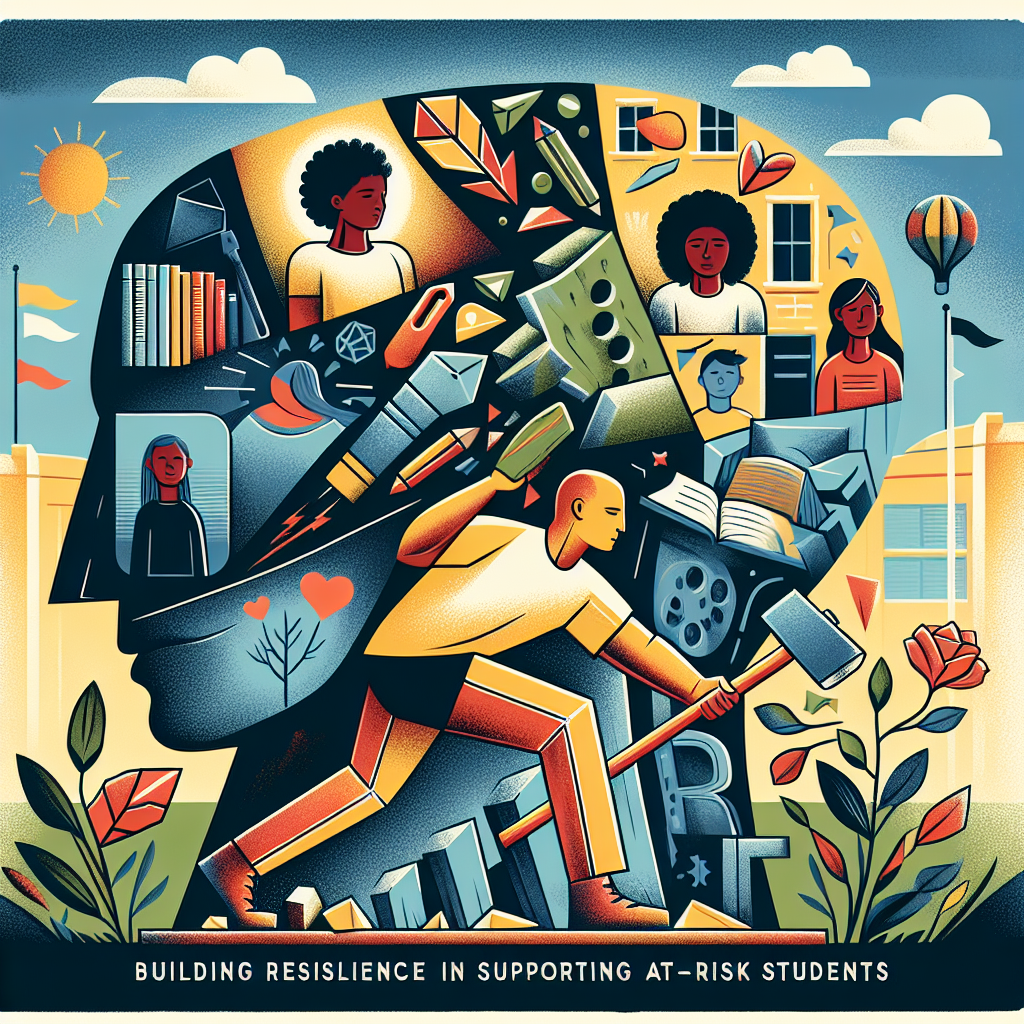
Introduction
"In the face of adversity, resilience is not just a trait but an essential skill." This idea resonates deeply within educational environments, particularly for at-risk students who face unique challenges outside the classroom. Building resilience is critical for these individuals; it can pave the way to academic success and personal growth. In this context, the implementation of Positive Behavioral Interventions and Supports (PBIS) emerges as a powerful mechanism for supporting at-risk students.
This article delves into Building Resilience: The Role of PBIS in Supporting At-Risk Students, examining how this proactive framework can transform educational experiences and outcomes. As we journey through the nuances of PBIS and its implications for resilience-building, we explore real-world applications, statistics, case studies, and actionable strategies for educators, parents, and administrators alike.
Understanding PBIS
What is PBIS?
Positive Behavioral Interventions and Supports (PBIS) is a framework designed to improve student behavior and create a positive school climate. PBIS emphasizes prevention, not punishment, and operates on three tiers:
- Tier 1: Universal Prevention – Strategies applied school-wide that benefit all students.
- Tier 2: Targeted Interventions – Specific strategies for students who need additional support.
- Tier 3: Intensive Interventions – Customized support for students with more complex needs.
The Importance of Building Resilience
Resilience refers to the capacity to recover quickly from difficulties. For at-risk students, cultivating resilience is vital; it can lead to:
- Improved emotional well-being
- Enhanced academic performance
- Better social skills
When we look at the intersection of PBIS and resilience, we begin to uncover how a supportive environment can actively help students manage adversity.
The Research Behind PBIS
Evidence of Effectiveness
Numerous studies indicate that PBIS is an effective framework for improving student behavior and satisfaction in schools. In a review conducted by Horner et al. (2010), schools implementing PBIS reported a decrease in disciplinary actions and an increase in academic performance.
Table 1: Key Findings from PBIS Research
| Study | Outcome | Impact |
|---|---|---|
| Horner et al. (2010) | Decrease in suspensions by up to 20% | Increased student engagement and safety |
| Bradshaw et al. (2010) | Improved student-teacher relationships | Enhanced emotional well-being |
| McIntosh et al. (2015) | Higher academic achievement | Greater school pride |
These findings underscore the significance of integrating PBIS into strategies aimed at nurturing resilience.
Case Studies of PBIS Implementation
Case Study 1: Riverside High School
Riverside High School adopted the PBIS framework and tailored it to support at-risk students. Through the implementation of "Check-In/Check-Out" (CICO) programs, students received daily feedback and encouragement. As a result, the school saw a 30% reduction in disciplinary referrals over two years.
Relevance: This case emphasizes consistency and the importance of daily support, which is crucial for building resilience.
Case Study 2: Willow Creek Elementary
At Willow Creek Elementary, teachers integrated social-emotional learning (SEL) into their PBIS approach. They created a curriculum focusing on coping strategies and emotional regulation. The students across grades showed a notable improvement in their ability to navigate stressful situations, with a 40% increase in self-reported resilience.
Relevance: Combining SEL with PBIS highlights the multifaceted approach necessary for developing resilience among younger students.
The Role of Educators in Building Resilience
Fostering a Supportive Environment
Educators play a pivotal role in the success of PBIS and the cultivation of resilience. Key strategies include:
- Modeling Positive Behavior: Teachers should embody the values they teach.
- Creating Safe Spaces: A welcoming classroom environment encourages students to express their feelings without fear of judgment.
- Encouraging Growth Mindset: Promote the belief that abilities can improve with effort.
Engaging the Community
Community involvement is essential for effective implementation. Schools should engage parents, guardians, and local organizations to extend PBIS initiatives beyond the classroom. Workshops, parent-teacher evenings, and collaboration with community resources foster a holistic approach to building resilience.
Practical Strategies for PBIS Implementation
Step 1: Assess Needs and Resources
Before incorporating PBIS, schools must evaluate their specific needs. This can be conducted through surveys, focus groups, and observations. Understanding the unique challenges faced by their students is the first step in tailoring an effective PBIS framework.
Step 2: Develop Clear Expectations
Developing clear expectations for behavior is foundational to PBIS. Educators should collaboratively establish guidelines that are easy for students to understand and follow.
Step 3: Train Staff
Ongoing training ensures that all faculty members are on the same page regarding PBIS practices. Regular professional development sessions allow staff to share successes, challenges, and strategies.
Step 4: Collect and Analyze Data
Data collection is vital for monitoring the effectiveness of PBIS. Schools should track disciplinary referrals, attendance, and academic performance. Analysis of this data allows for continuous improvement and adjustment of strategies.
Step 5: Celebrate Success
Recognizing achievements, both big and small, reinforces positive behavior. Celebrations create a school culture that values and encourages resilience.
Motivating Students through PBIS
Empowering Student Voice
Engaging students in decision-making processes related to school policies strengthens their sense of belonging. PBIS encourages student involvement in creating rules and norms, fostering responsibility and resilience.
Peer Support Programs
Implementing peer mentorship initiatives can effectively build resilience. Students can share experiences and strategies for coping with challenges, reinforcing the idea that they are not alone in their struggles.
Overcoming Challenges in PBIS Implementation
Resistance to Change
Resistance from staff or students may be common when implementing PBIS. Open communication and transparent processes can mitigate misunderstandings and encourage buy-in.
Resource Limitations
Lack of funding or resources can hinder successful PBIS implementation. Collaborating with community partners and seeking grants can provide additional support.
Conclusion
Building resilience is crucial for at-risk students, and the role of PBIS in supporting at-risk students cannot be overstated. By creating a proactive, supportive educational environment and incorporating strategies that foster emotional and behavioral development, schools can profoundly impact the lives of these individuals.
As we move forward, let us remember that resilience is not an innate trait but a skill that can be cultivated. By leveraging the power of PBIS, we can empower at-risk students to thrive, not just academically but in every aspect of their lives.
FAQs
1. What are the main components of PBIS?
PBIS consists of three tiers: universal prevention (Tier 1), targeted interventions (Tier 2), and intensive interventions (Tier 3).
2. How can PBIS support at-risk students?
PBIS provides structured supports, fosters positive relationships, and emphasizes social-emotional learning, all of which are crucial for resilience in at-risk students.
3. Can PBIS be implemented in all types of schools?
Yes, PBIS is adaptable and can be tailored to different educational settings, including traditional schools, charter schools, and alternative schools.
4. What role do parents play in PBIS?
Parents are crucial partners in the PBIS framework. Their involvement in programs and activities enhances communication and consistency between home and school.
5. How can schools measure the success of their PBIS implementation?
Success can be measured through data collection on student behavior, academic performance, and feedback from students and staff, allowing for continuous improvement.
This article provides an in-depth exploration of Building Resilience: The Role of PBIS in Supporting At-Risk Students, bringing to light evidence-based practices and real-world applications that illuminate the path toward enhanced student well-being and achievement.














